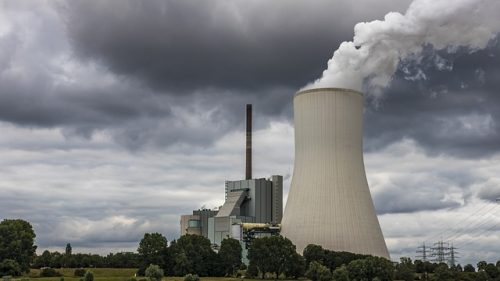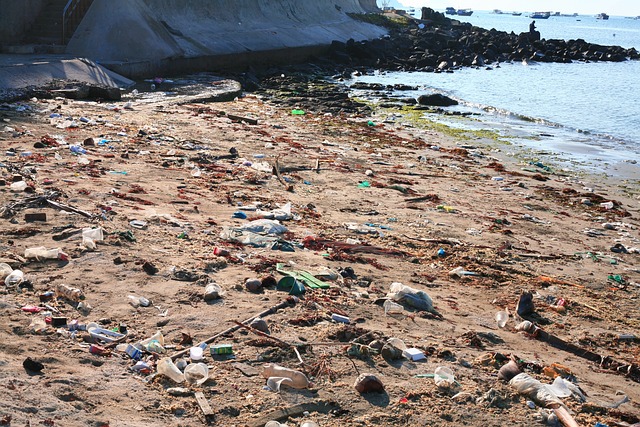What is meant by ‘Transboundary Pollution’?
Transboundary pollution refers to the kind of pollution through any means- water or air, whose point of origin is at a different place, country or region but the effects are felt in a country/region away and distant from it.
Common Pathways of Transboundary Pollution:
Transboundary pollution is usually what happens when a country emits air emissions or releases effluents in the water bodies which ultimately cross borders after travelling hundreds or even thousands of kilometers and damage the environment of another country by causing air pollution or water pollution.

Impacts of Transboundary Air and Water Pollution in Pakistan:
The neighboring countries of Pakistan- India and China emit toxic gases and effluents in to the air and water bodies respectively that have proved to be environmental stressors for the air and water quality of various regions across Pakistan. Some of the impacts of the transboundary pollution in Pakistan are mentioned below:
- Smog: The various nuclear power plants, industries and agricultural crop burning in India and China have caused grave consequences for the people of Pakistan. 11 million deaths have occurred due to excessive air pollution alone. In 2021, Smog and bad air quality were responsible for a large number of deaths and hazardous health effects on the public and killed 10 times more people than COVID-19. Industries especially in Delhi, Lucknow and Kanpur release emissions on a daily basis which then migrates and causes its effect in Pakistan, particularly Lahore. This smog contains high concentrations of Particulate Matter- PM 2.5 and can cause respiratory diseases like bronchitis, asthma and even heart attacks and strokes. This problem is particularly aggravated during October and November when the farmers burn agricultural crop residue in large numbers and due to the approaching winter, these emissions remain suspended in the troposphere where they accumulate and cause problems. Also read: India, China, Pakistan- Top World’s Worst Air Quality Charts
- Water Eutrophication and Acidification: Due to the large population of China and India, the huge number of agricultural activities result in the discharge of a lot of pesticides, fertilizers and other nutrient rich chemicals into the water bodies which ultimately cross over into Pakistan and cause a mass algal growth/bloom problem and contaminate the water sources for local residents. Additionally, the pH level of the water was also disturbed due to the influx of a large number of chemicals and pesticides being released into the water where they cause harm to the aquatic ecosystem and organisms. This is also negatively impacting the local population whose main means of livelihood is fishing or reliant on harvesting water resources such as seafood like crabs as high acidic environment of the water weaken the crab’s outer shell as it is made of calcium carbonate. For more detailed information: Eutrophication – Causes, Effects, and Solutions.
- Carbon Black Deposition: The Himalayan mountain range in the Gilgit-Baltistan region of Pakistan is badly being effected due to the transboundary air pollution from India and China. As one of the worst hit regions due to carbon black deposition on the ice caps and Himalayan glaciers; the deposition of carbon in the form of soot, particulate matter, dust particles, carbon dioxide and carbon monoxide particles on the glaciers in the form of black deposits is particularly a concern for the reduced albedo– that refers to the low reflectivity of the ice glaciers. Glaciers should have high reflectivity that prevents them from melting. As the deposition causes a high amount of reflection due to the black color, this causes rapid melting of the glaciers and the result is polluted and contaminated water ways that can affect the local communities who rely on glacial water as a drinking water source. Moreover, there is also a threat of GLOF’s that can affect the mountain communities. For further information, check out Black Soot and Ash Pollution Deposits on Glaciers- Causes and Impacts
- Downstream Water Pollution: Again, the most common impact of transboundary pollution is one that affects out of region water bodies causing water-borne diseases, water-toxicity and affects the local livelihood. The polluted water ways and rivers that enter into Pakistan from India carry all of the pollution caused due to plastic waste, fertilizers, pathogens borne from improper infected waste dumping from local medical facilities that can lead to cancer, and even fatal diseases. Also check out: South Asia Water War- Impact of Indian Hegemonic Aim on Pakistan
- Hudiara Drain: Hudiara drain is the main culprit in causing transboundary water pollution in the River Ravi as well as underground water pollution in places through which it passes after entering Pakistan through the Pak-India border. It originates in Batala, Gurdaspur, India and then travels more than 50 km though Pakistan. The Hudiara Drain was found to have low BOD (Biological Oxygen Demand), DO (Dissolved Oxygen) as well as a very high number of TDS (Total Dissolved Solids), due to the pollution caused . The water from Hudiara drain is commonly used for irrigation purposes and thus, prolonged exposure to toxic metals in soils can effect plants as they will uptake toxic chemicals and from there those will enter the food chain. This can effect the entire region’s population.
- Acid Rain: The toxic chemicals from the power plants and electricity generating grid stations accumulate in the air form clouds of precipitation and result in acid rain that can harm not only aquatic life and disturb the pH of the soil but also effect the monuments and buildings. The main cause of acid rain in Pakistan is along the Pakistan-China border due to the industrial emissions from Chinese Industrial Regions and power plants. For more information, read: Acid Rain – Causes, Effects, and Solutions.

- Various Illnesses: As mentioned before, the water and air pollution travelling from India and China border can cause a vast number of diseases knowingly and unknowingly. Smog, bad air and water quality is a direct result of these polluted sources coming from the neighboring countries. Pakistan is badly affected majorly by these transboundary pollutions which has affected marginalized groups in particular living near borders and people living in densely populated cities like Lahore. There has been a spike in respiratory disorders, cancer, neurodevelopmental and fetal disorders in the region.
CONCLUSION:
Transboundary pollution has resulted in conflict between nations, due to the poor management of air and water resources. However, opening avenues to mitigate and manage transboundary pollution can lead to stabilizing the relationship of the two nations as well. Taking measures to prevent crop burning, use of eco-friendly fertilizers like manure and green composting along with use of Integrated Pest Management can greatly help in curbing the effects of transboundary pollution. Overall, a large scale international collaboration and cooperation is needed to mitigate these impacts in Pakistan.
Also check out: Controlling Air Pollution- Crucial for World Environment
We hope you liked this post! Please comment below if you have any suggestions, comments or feedback! We at #envpk love hearing from readers! Thanks




